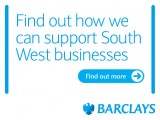The South West’s construction industry is missing out by not claiming one of the best forms of tax relief available to it, according to research by accountancy group Smith & Williamson.
Recent analysis of government statistics by the firm, which has a large office in central Bristol, showed that just 0.2% of the 290,000 successful claims made for research and development (R&D) tax credits were brought by the construction industry.
Paul Bray, a partner in Smith & Williamson’s dedicated real estate team in Bristol, said: “R&D tax credits are government-backed but, whether by complexity, length of time or the requirements to claim, are largely ignored by the construction industry. 
“However, they can have a huge financial benefit to a company if claimed correctly. For profitable companies, the relief effectively reduces the net cost of spending to 56p for every £1 spent on R&D activities, based on the current corporation tax rate of 19%. Alternatively, the relief can give rise to cash repayments of up to 33.3% of the cost for expenditure incurred from April 1, 2015, even where no tax has ever been paid.”
He said many companies overlooked R&D relief as they were not aware that they are undertaking R&D, and do not realise they do not have to be involved in the technology sector.
A few examples of construction-related activities that might qualify are:
Development or adaptation of tools and materials to improve efficiency, or to adjust construction techniques to adapt to environmental or land conditions, such as construction to withstand weather conditions.
Identification of technological improvements in the construction process or to the products and software used. This can include developing, testing and implementing systems that are technically difficult.
Research and design, development of prototypes, commissioning, including quality testing and production of the final product/ building.
Development of environmentally friendly methods, or sustainable technology.
Development of sophisticated systems to meet health and safety requirements, for example, innovative scaffolding, safe working processes and automation.
Modern Methods of Construction (MMC) and Building Information Modelling (BIM).
Paul Bray added: “Making a claim can be a complex and lengthy process but there are outsourcing options and help is available. However, companies need to act quickly if they believe they may have been carrying out activities that are eligible for R&D tax relief as backdated claims must be made within two years of the end of the relevant accounting period. If a company’s accounting period end is December 31, 2015, and the company has already submitted the tax return by the normal filing deadline of December 31, 2016, the company will still have until December 31, 2017, to amend the tax computation and submit the R&D claim to HMRC.”
Smith & Williamson has developed an R&D tax calculator for businesses to gain a quick estimate of their potential gains.
It is available on the firm’s website at http://smithandwilliamson.com/business/insights/r-and-d-tax-credits-in-the-construction-industry/r-and-d-tax-calculator





























